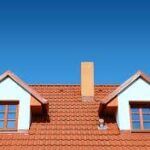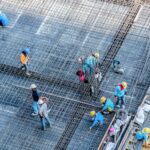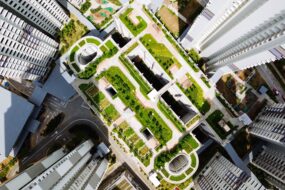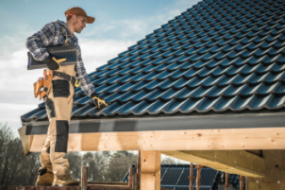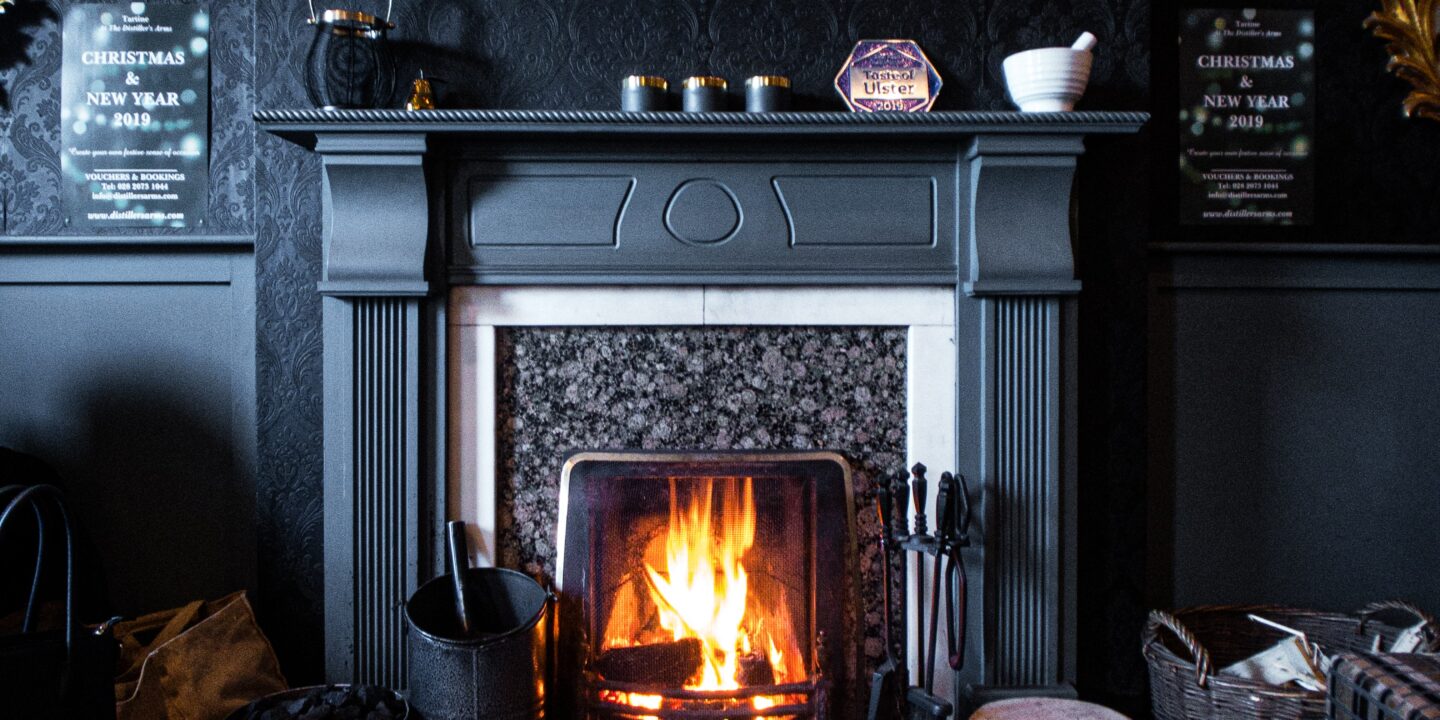


Take Care Of Your Chimney: Ensure Safety and Efficiency – Proper chimney care is essential for the safety and efficiency of your fireplace. Discover expert tips and best practices for chimney maintenance, cleaning, and inspections. Learn about the importance of regular upkeep, identifying potential issues, and ensuring proper ventilation. Take care of your chimney to enjoy a cozy and worry-free fireplace experience. Learn more about chimney care today.
Nothing beats an evening spent in front of the fireplace while storms roll through. And it’s nights like this that make it important to maintain your home’s fireplace. Taking care of your chimney and fireplace is, for the most part, effortless, especially once you’ve started a few flames. However, if this is your first time buying a house with a fireplace, we’ve compiled a list of “recommended practices” that you may use to keep your fires safe. Grab a cup of coffee or hot chocolate, move your laptop to the rocking rocker by the fire, and use these techniques to properly start a fire so you can get the most out of your fireplace.
Guidelines for Safety
First and foremost, ensure that you have all of the equipment you’ll need within arm’s reach so that you can quickly control the fire. Here are a few safety items you should consider purchasing:
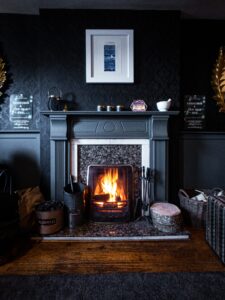
Fireplace tools and holders: You may buy fireplace tool sets that include all of the basic equipment you’ll need to shift wood and ash without creating a hazard or a mess. Find a set that includes a shovel (for ash), a poker (for moving wood), tongs (for the same reason), and a broom (to clean up any remaining ash). Most sets have a hanging rack that may be conveniently positioned near the fireplace.
Mesh screen: Embers can be a hazard, which is why you want to keep them contained. For the most part, your fireplace will keep its embers from flying out into your home. However, a backdraft through the chimney or air moving through your home can send embers flying. A mesh screen helps to contain those embers, especially larger embers that may end up starting a fire. Get a mesh screen that fits the size and shape of your fireplace, and keep the screen in place when a fire is lit and you aren’t actively maintaining the fire.
Ash bucket: After every fire, you’ll be left with a pile of soot. Keep an ash bucket handy to scoop up all of the ash that remains after your fires. Be sure to let the embers, ash, and leftover wood cool to the touch before you dispose of any ash. Cool ash can be used in compost (be sure not to use too much!), and it can be used as an ice melt, among other things!
Andirons: Andirons (or firedogs) are fireplace brackets that hold up the wood of a fire. This simple device enables better air circulation, so that your fire burns hotter and with less smoke. In addition, andirons can help to keep the fire contained and in-place while wood rests on the brackets. You can find andirons of all sorts of designs.
Wood holder: If you don’t have a place to store wood that is near your fire, you can invest in a holder to keep dry wood handy. Just be sure to keep your wood holder well away from the fireplace itself, since a loose ember may ignite the wood in the holder. You can find fire boxes, fire carriers, and other furnishings to hold your firewood.
Fire gloves: Protect your hands with a pair of fire gloves. These gloves are designed to handle high heat, so you can adjust the logs in your fire without worrying about embers scalding your hands. We suggest extra-long gloves since they provide protection for your wrist and part of your arm, as well as your hand.
Hearth rug: If you have hardwood or carpet flooring near your fireplace, then it’s liable to ignite, or it may be damaged by hot embers that settle on the surface, leaving their mark. You can invest in a hearth rug that is designed to safely catch any flying embers. These rugs are flame-resistant, so they shouldn’t ignite thanks to those embers. Plus, you can find a variety of rugs in all sorts of designs, so you can match the aesthetic of your home.
Use the Right Wood
Now that you have all of the tools and equipment that you need to make the most of your fireplace, it’s time to build a fire. Take note, however, that you can’t use any wood that you find out there. You should be picky with the wood that you use in your fireplace, since certain types of wood can be toxic, and they can leave soot building up in your chimney (which can result in a chimney fire if you don’t have your chimney regularly cleaned!). So let’s go over good wood that you should use for your fireplace, as well as a list of bad wood sources that can be damaging and dangerous.
The Good Stuff
In general, you want to find dry hardwoods to make your fires safe and pleasant. Plus, hardwoods tend to burn longer than softwoods, and they may produce more heat, depending on the wood species. We recommend the following hardwoods, which are prized for their fire-producing characteristics:
- Birch: Birch is an excellent burning material, and its bark serves as a natural firestarter. Simply peel off a few strips, place it at the base of your fire alongside some kindling, strike a match, and voilà!
- Oak: Oak is highly dense, and it’s a fantastic hardwood for lengthy fires. You can sit in front of a few logs of oak for an hour or more before the logs peter out. Oak may be more difficult than birch to start, but once it’s rolling it will last and last.
- Ash: Ash produces a consistent flame, and it’s fairly easy to ignite. Plus, ash is full of energy, so it produces a hotter flame.
- Wood bricks: Nowadays, you can find fireplace-safe wood bricks that are designed to produce a consistent flame with little smoke.
The Bad Stuff
- Softwoods: As we mentioned, softwoods produce more soot. These smokier woods also burn quickly, which can make a fire more of a chore. Reserve your softwoods for outdoor fires (they make great fire starters, as long as you’re outdoors!).
- Wet wood: Wet wood will resist burning. Plus, it will produce more smoke as it ignites. Wet wood simply isn’t ideal, whether you’re inside by the fireplace, or outside by the firepit.
- Endangered wood species: Be mindful that some species of wood are endangered. Look up local restrictions before cutting down any trees for firewood.
- Bushes, leaves, and other junk: Keep trash, leaves, and bushes out of your fireplace. These items and objects can be smoky, or downright toxic. You should never burn trash, indoors or outdoors.
Clean Your Chimney Regularly
This one’s big: Clean your chimney! Your chimney will inevitably build up soot, and this soot can actually ignite if enough buildup is stuck to the flue. When that happens, your chimney will light on fire, which can easily spread to the rest of your home. We recommend cleaning your chimney flue once per year for those who use their chimneys regularly. You should also have your chimney inspected at least once per year — if not cleaned — to ensure that soot and creosote don’t build up excessively along the flue, and to ensure that no other blockages have occurred (e.g. bird nests, leaves, etc.). Get A Free Estimate! Check out this post about 5 Common Chimney Risks and How to Avoid Them.


